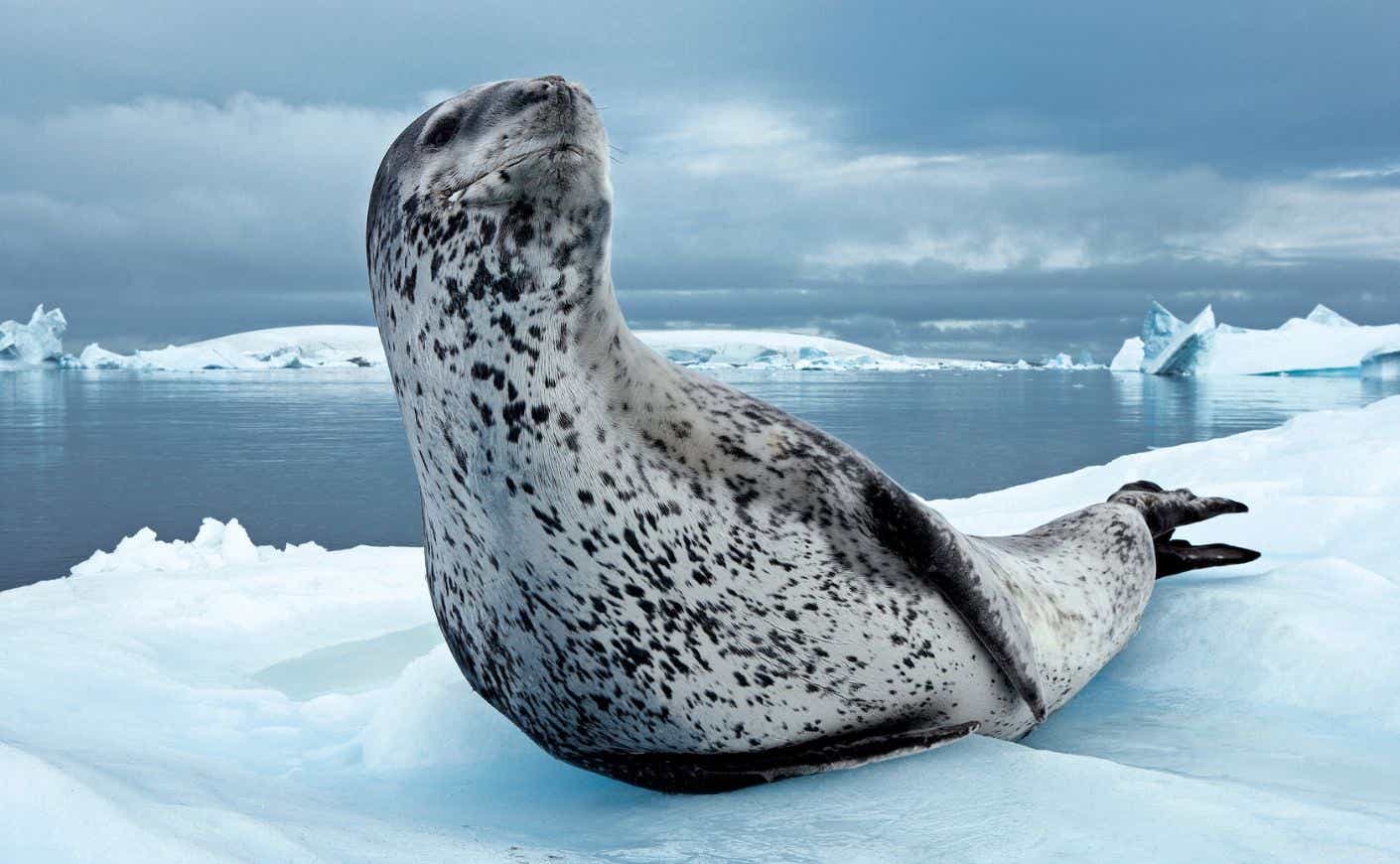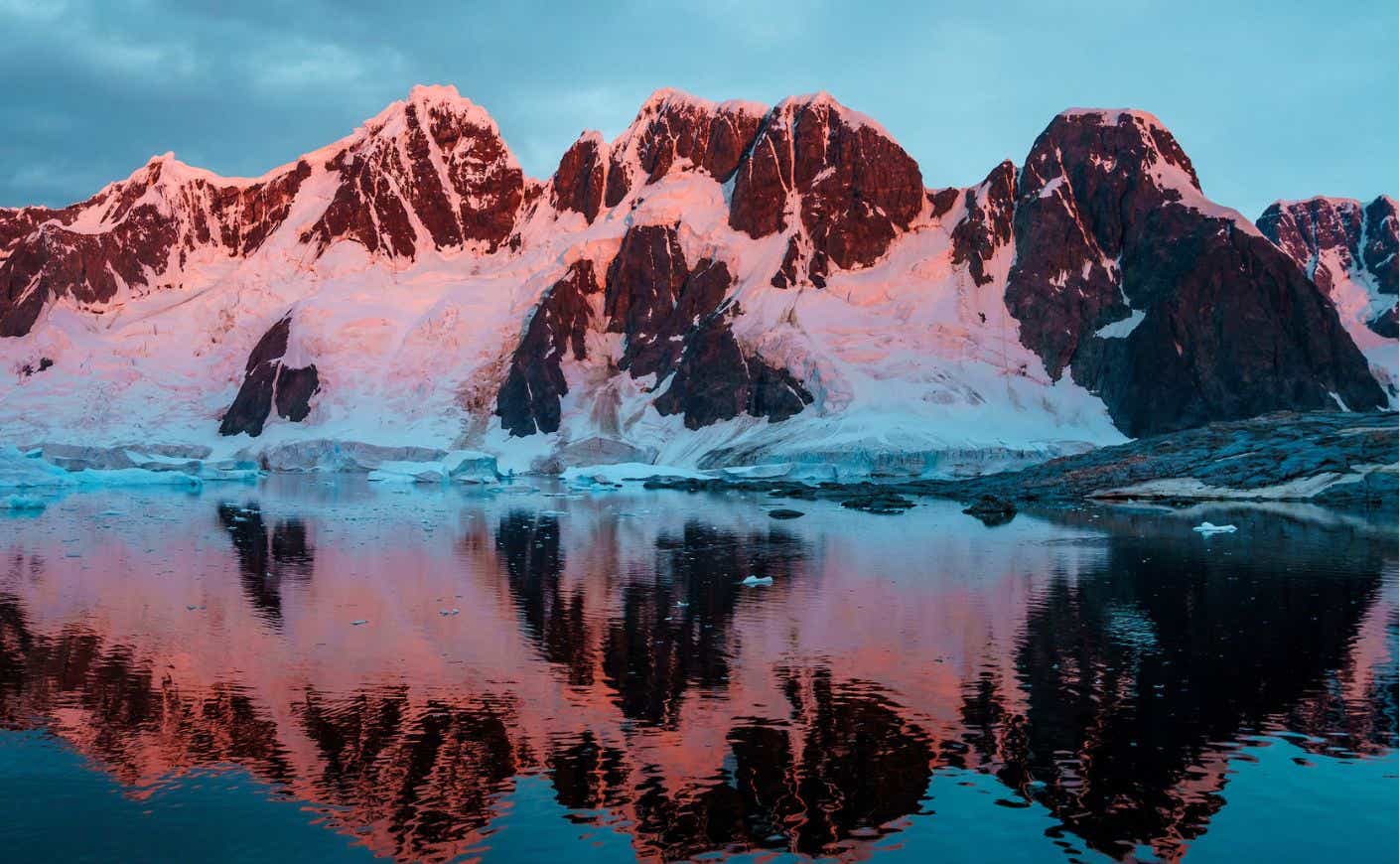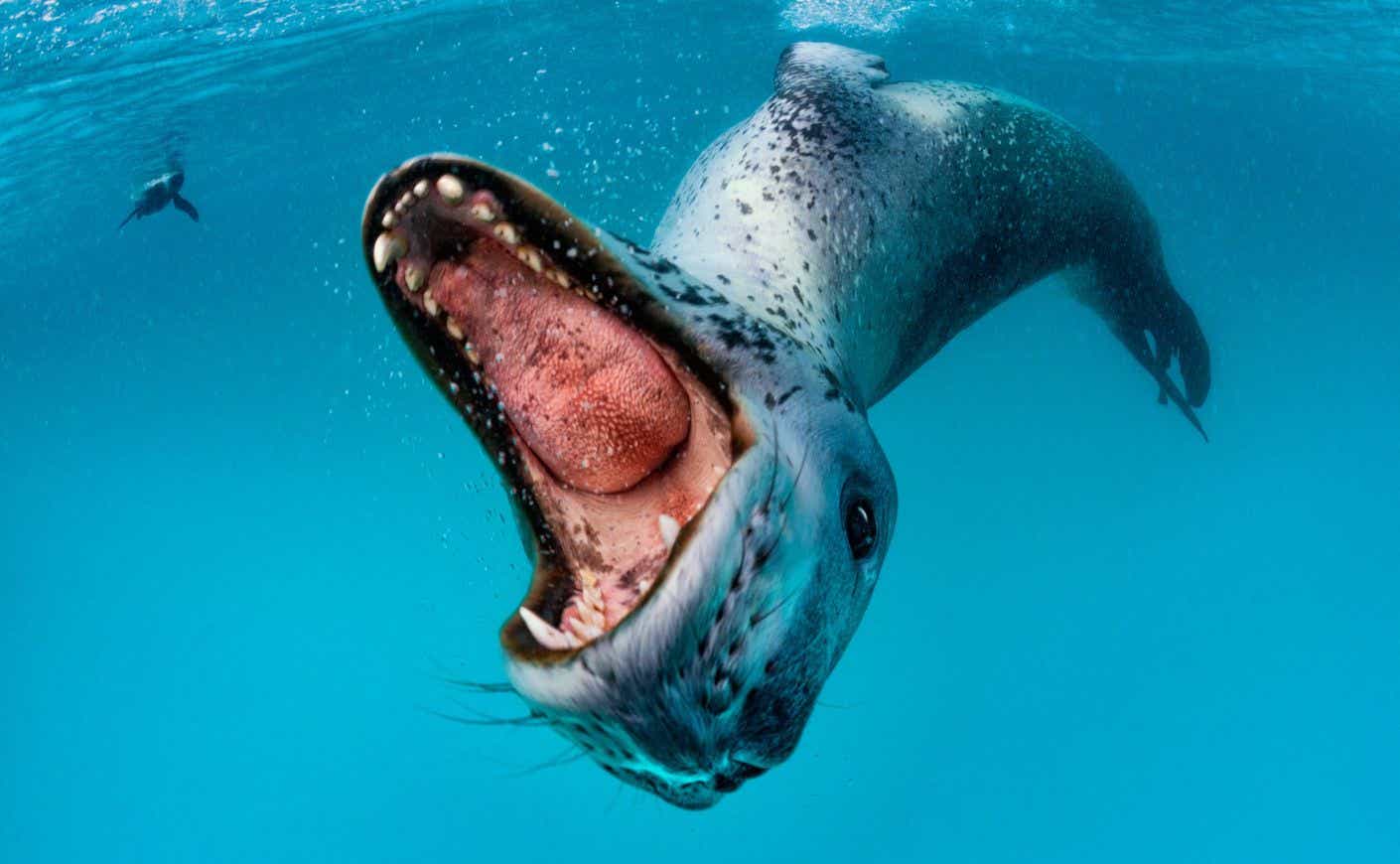I sometimes imagine what that final journey at the end of my life will look like. I picture myself on my deathbed, surrounded by loved ones, thinking of the many adventures I’ve had as a photographer specializing in some of the most extreme corners of the planet. Whenever that day comes, there is one story I’ll remember above all others: the first time I got in the water with a leopard seal in Antarctica.
To reach Antarctica, you must cross the Southern Ocean and its infamous Drake Passage on a multi-day journey through monstrous swells that routinely reach 30 feet. Waves lift you skyward and plunge you so deep the horizon disappears. Just when your body can’t take another hour of motion, snow petrels appear above the waves as jagged peaks rise from the horizon. You cannot put into words that feeling as you arrive in Antarctica. It’s a place so raw and wild, it feels like standing at the forgotten ends of the Earth. It is truly the most beautiful place I have ever been.
In 2006, I joined a small team off the Antarctic Peninsula to photograph leopard seals. For more than a century, these ice-loving pinnipeds had been branded as monsters: 12-foot predators with reptilian grins and black, sinister eyes. Just three years prior, in 2003, one of them tragically drowned a scientist by dragging her below the surface. Still, I believed these creatures were misunderstood. I wanted to know the truth, and the best way to find out was to get in the water with them myself.
An eye-opening encounter
We cruised along the still, black water, weaving between icebergs. My Swedish guide, lifelong friend, and leopard seal expert, Göran, spotted a massive female thrashing a penguin. “That’s the biggest leopard seal I’ve ever seen,” he said, grinning over his shoulder at me.
As soon as she noticed us, the seal darted beneath our inflatable Zodiac boat and slammed the penguin against the underside of our tiny vessel. Before I had the chance to decide if that was meant to be a greeting or a threat, Göran nodded decisively and said, “Time to get in the water, ja?”
Every instinct screamed don’t, but this is what I came to Antarctica to do. So, with trembling legs and a dry mouth, I rolled into the freezing water. Even in a dry suit, the cold hits like a punch to the face. But you forget about that pretty quickly when a leopard seal is barreling straight for you. With a head bigger than a grizzly bear’s, she opened her jaws wide enough to swallow my camera whole.
I braced against the impact, extending my camera like a shield, but the force never hit. Instead, her eyes seemed to soften, and her demeanor changed from threatening to curious. That was when I realized she was studying her own reflection in the glass dome of my camera housing, sizing up the “other” seal. When she grew bored, she swam away and returned with a live penguin, which she released in front of me. I ducked as it shot past my head in its frantic escape.

Undeterred by my reaction, the seal quickly retrieved another, then another. Over the next four days, she brought me penguins, some alive, some dead or half-eaten, and she pushed them into my camera as if trying to feed me. Each time I refused the offering, trying my best to be polite, she looked more and more dejected.
I had come to photograph a supposed killer. Instead, I found a determined caretaker.
Though they’re best known as Antarctic predators that depend on sea ice, leopard seals are showing up farther north along the southern tips of continents. You may not need to travel all the way to Antarctica to see them, but if you happen to encounter one, it’s important to remember they’re still apex predators that demand a healthy level of respect.
The fight for the Southern Ocean
That encounter changed me. It ignited my love for Antarctica and awakened my role in protecting it. In 2017, I returned with my partner, Cristina Mittermeier, to the same frozen world that had stolen my heart a decade before. When we finally encountered a leopard seal together, I watched her fear quickly melt into awe, just as it had for me.
This time, we weren’t there only for the leopard seals, but to fight for the Southern Ocean. It seems that human threats now extend even to the farthest reaches of the planet.

The Southern Ocean depends on an animal no bigger than a matchstick: krill. These small, shrimp-like animals gather in swarms that can be seen from space, sustaining whales, penguins, seabirds, fish, and even leopard seals. When larger prey is scarce, krill can make up nearly 80 percent of a leopard seal’s diet, which they filter through their teeth like a sieve.
While Antarctica’s land is protected, its surrounding waters remain open to exploitation. Industrial krill fleets are stripping away the foundation of the Antarctic ecosystem, turning its life force into omega-3 supplements and feed for farmed salmon. Pieces of Antarctica now line our grocery store shelves. If you buy these products, you can choose algae-based omega-3s or sustainable wild-caught salmon instead. Small choices, spread over many consumers, can make a difference.
The memory of that first time in Antarctica, the feeling of being in the water with that leopard seal, is something I’ll carry to my deathbed as fuel for my advocacy. Life in Antarctica deserves to exist. It’s one of the last truly wild places left on Earth, and it’s ours to lose — or to save.









